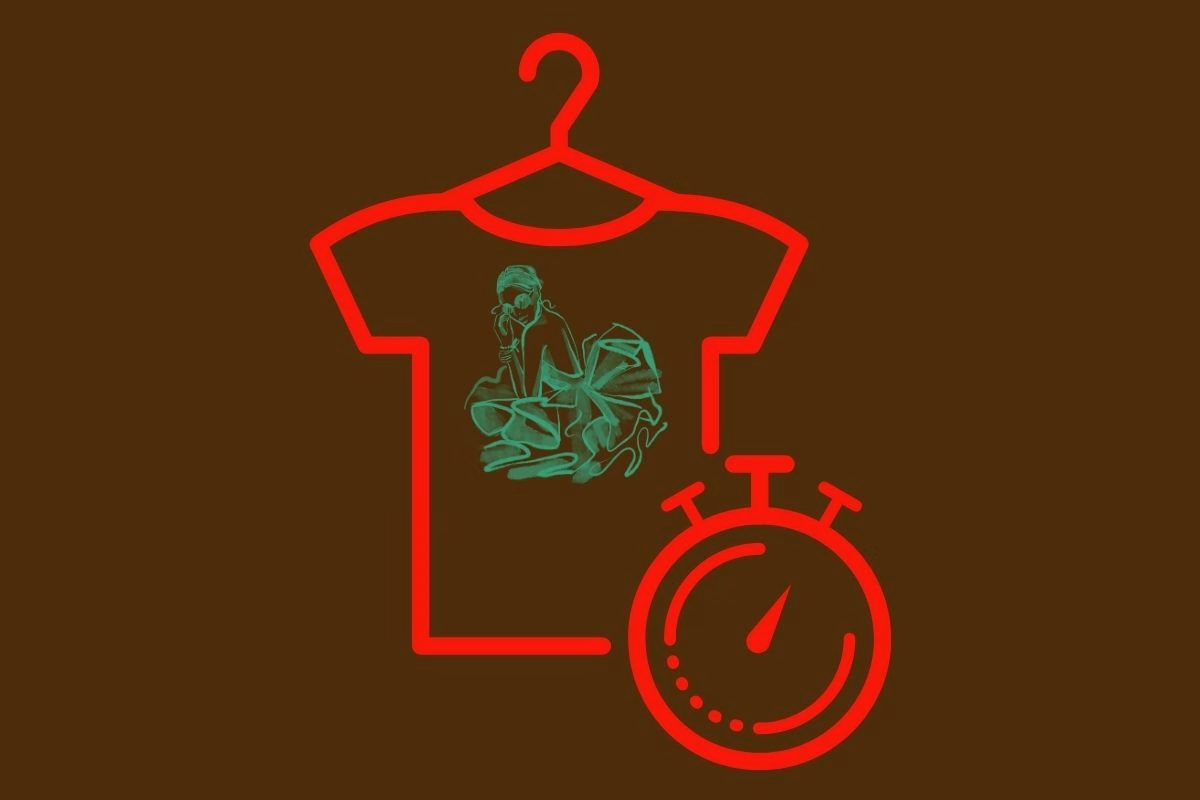
Fast fashion might keep us stylish on a budget, but it’s wreaking havoc on the environment. From polluting water and overusing resources to pumping out greenhouse gases, filling up landfills, and spreading microplastics, the impact is huge. So, why do we keep buying it? The appeal of low prices, easy access to trends, social media hype, and sheer convenience keeps us hooked. But there’s hope! By shifting to slow fashion, recycling and upcycling, supporting sustainable brands, and raising awareness, we can start making a difference. It’s time to rethink how we shop and make choices that don’t cost the planet.
Contents Of The Article
How Does Fast Fashion Affect Global Environmental Health?
Fast fashion, a term synonymous with trendy, low-cost clothing, has taken the fashion industry by storm. While it may satisfy our desire for instant gratification, it comes with a hefty price for the environment.
This article explores how fast fashion harms our planet, why we need to rethink our consumption habits, and what we can do to make a difference.
What Is Fast Fashion?
Fast fashion is all about getting trendy clothes into stores (and online) super quickly at super low prices. It’s a business model designed to mimic high-end fashion trends at lightning speed, giving everyone access to the latest styles without breaking the bank.
Also known as quick fashion, disposable fashion, or trend-driven fashion, this concept keeps the racks stocked with fresh styles constantly.
Big names like Zara, H&M, and Shein lead the pack, rolling out new collections almost weekly. While it makes staying stylish easy, it often comes with a hidden cost—poor working conditions, environmental damage, and lower-quality products.
By cutting corners with cheap materials and exploitative labor practices, fast fashion has changed the industry, but not without some major social and environmental consequences.
How Does Fast Fashion Work?
Fast fashion thrives by spotting trends early, producing them quickly, and pricing them so low you can’t resist. These brands use mass production, synthetic fabrics, and low wages to keep costs down and their styles fresh.
Why Is It a Problem?
Behind the affordable price tags and trendy designs lies a darker side. Fast fashion contributes to pollution, uses up natural resources, and promotes wastefulness. Plus, it often relies on unfair labor practices, making it a lose-lose for workers and the planet.
What do you think—worth the trade-off or time for change?
Environmental Impacts of Fast Fashion
This kind of fashion’s environmental footprint is vast.
Here are the key ways it harms the planet:
1. Water Pollution
The fast fashion industry uses a large number of chemicals for dyeing fabrics. These chemicals are often dumped into rivers and water bodies, causing severe harm to aquatic biodiversity. For instance, the chemicals used in denim production contribute directly to environmental pollution.
2. Excessive Water Usage
Cotton cultivation requires an enormous amount of water. For example, producing just one T-shirt requires about 2,700 liters of water. The increased demand driven by fast fashion places additional pressure on global water resources.
3. Greenhouse Gas Emissions
Synthetic fabrics like polyester are energy-intensive to produce and are a significant source of greenhouse gas emissions. Polyester waste takes hundreds of years to decompose and contributes to microplastic pollution.
4. Waste Management Crisis
Fast fashion garments have a very short lifecycle. Since they are inexpensive, people discard them easily, leading to mountains of waste in landfills. Every year, millions of tons of clothing waste are generated, which damages soil fertility and emits methane gas.
5. Loss of Biodiversity
The raw materials required for fast fashion often lead to deforestation. Additionally, petrochemicals used to make synthetic fibers directly affect ecosystems and biodiversity.
6. Microplastic Pollution
Washing synthetic fabrics releases tiny plastic particles into the water. These accumulate in oceans and other water bodies, harming marine biodiversity and entering the food chain.
7. High Carbon Footprint
The fast fashion supply chain (production, transportation, and distribution) leaves a significant carbon footprint. The industry emits approximately 1.2 billion tons of carbon dioxide annually.
8. Toxic Waste Production
The chemicals used in clothing production increase the toxicity of soil and water bodies. Over time, these toxic substances enter the food chain, harming both humans and animals.
9. Wastage of Natural Resources
Rapid production and short usage periods make natural resource utilization inefficient. This creates a need for additional resource extraction to meet production demands.
10. Lack of Environmental Awareness
The popularity of fast fashion has led to a decline in awareness about sustainable clothing use and recycling. It has hindered the adoption of sustainable fashion practices.

Why We’re Hooked on Fast Fashion
Despite its environmental consequences, this quick fashion continues to dominate the market due to several psychological, social, and economic factors. Understanding why we’re drawn to it can help us break the cycle and make more sustainable choices.
1. Affordability
Fast fashion brands prioritize affordability, allowing consumers to purchase trendy clothing at a fraction of the cost of high-end brands. This makes fashion accessible to a wider audience, but these low prices come at the expense of quality, ethical labor practices, and environmental sustainability. Consumers often overlook these hidden costs in favor of immediate savings.
2. Trend Accessibility
The fast fashion model excels at replicating runway trends and celebrity styles quickly, making them available to the average shopper within weeks. This rapid turnover encourages impulsive buying and the desire to always stay in vogue. Shoppers feel empowered to experiment with their style without the financial commitment of designer labels.
3. Social Media Influence
Platforms like Instagram, TikTok, and Pinterest have heightened the demand for fresh outfits. The “outfit of the day” culture pressures individuals to constantly update their wardrobes to maintain social status or fit in with trending aesthetics. Influencers and targeted advertisements amplify this demand by promoting the latest collections from fast fashion brands.
4. Convenience
The rise of e-commerce has made fast fashion more convenient than ever. With options like same-day delivery, free returns, and frequent discounts, online shopping removes barriers to purchasing. Consumers can browse, select, and receive items without leaving their homes, fostering a culture of instant gratification. This convenience often outweighs considerations of sustainability or long-term impact.
So, why do we keep buying? Here are the psychological and social drivers:
Steps to Address the Issue
1. Embrace Slow Fashion
Shift your focus to slow fashion by choosing high-quality, timeless clothing that is durable and long-lasting. Avoid the temptation of buying trendy items that quickly go out of style. Slow fashion prioritizes thoughtful consumption and reduces waste, offering a sustainable alternative to fast fashion.
2. Recycle and Upcycle
Instead of discarding old clothes, find creative ways to recycle or upcycle them. Transform outdated garments into new pieces or donate them to those in need. Recycling helps to minimize textile waste, while upcycling gives items a fresh purpose, extending their life cycle and reducing landfill overflow.
3. Support Sustainable Brands
Choose brands that are transparent about their production practices and actively commit to sustainability. These companies often use eco-friendly materials, pay fair wages, and minimize their environmental impact. Supporting such brands encourages ethical practices within the industry and creates demand for more responsible fashion options.
4. Educate Yourself
Knowledge is power. Take the time to learn about the environmental and social impacts of fast fashion. Understand how your purchasing habits influence the planet and explore resources about sustainable fashion.
By staying informed, you can make better decisions and inspire others to do the same.
FAQs About “Trend-driven fashion“.
1. What is fast fashion?
Fast fashion refers to the production of trendy, low-cost clothing that imitates runway styles and celebrity looks. This rapid manufacturing model prioritizes speed and affordability, making fashion accessible to everyone. However, it often compromises on quality, sustainability, and ethical labor practices.
2. Why is fast fashion harmful?
Fast fashion is detrimental to the environment due to its excessive use of resources like water and energy. The industry contributes to pollution through chemical waste, greenhouse gas emissions, and microplastic release. Additionally, it promotes a throwaway culture, resulting in large amounts of textile waste that end up in landfills.
3. Can fast fashion be sustainable?
Achieving sustainability in fast fashion is challenging because the business model relies on mass production and quick turnover. While some brands are introducing eco-friendly materials and ethical practices, the core principles of fast fashion conflict with true sustainability. Long-term solutions require systemic changes and consumer awareness.
4. How can I shop sustainably?
To shop sustainably, consider buying second-hand clothing or supporting brands that prioritize ethical and eco-friendly practices. Focus on purchasing durable, high-quality items that you can wear for a long time. Avoid impulse buying and invest in timeless pieces rather than trendy, short-lived garments.
5. What role do governments play?
Governments play a critical role in regulating the fast fashion industry. They can enforce laws to reduce waste, limit environmental pollution, and ensure fair labor practices. Policies encouraging sustainable production, such as tax incentives for eco-friendly brands and penalties for non-compliance, can drive meaningful change.
Wrapping It Up
Fast or Quick fashion may seem like an affordable and convenient choice, but it’s a major contributor to environmental degradation.
By making conscious shopping decisions and supporting sustainable practices, we can collectively reduce its impact.
Let’s choose quality over quantity and make fashion a force for good.





